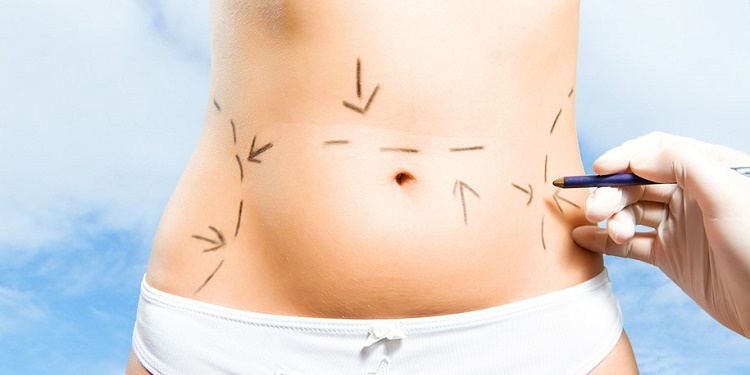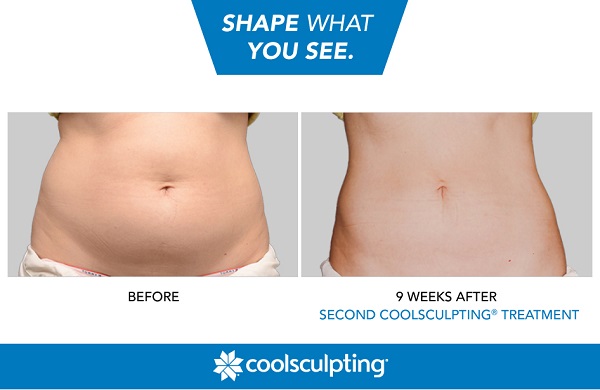CoolSculpting vs. Liposuction: What’s the difference?

Are you struggling with stubborn pockets of fat that you just can’t seem to lose? There is good news: Liposuction is no longer your only option to eliminate it!
There are a number of excellent non-invasive technologies—such as CoolSculpting®—that can help you to shed these trouble spots safely and effectively. Before we take a look at the major differences between the two procedures, first let’s take a closer look at what they are and how they actually work to help patients shed stubborn body fat.
CoolSculpting
CoolSculpting is a minimally invasive fat reduction technique that uses controlled cooling known as cryolipolysis to freeze fat cells, and contour the body. CoolSculpting was developed by ZELTIQ Aesthetics, and is FDA approved* for use on the upper arms, abdomen, thighs, and under the chin. It can remove up to 25% of fat in the area that’s treated.
*In the U.S., the CoolSculpting procedure is FDA-cleared for the treatment of visible fat bulges in the submental area, thigh, abdomen and flank, along with bra fat, back fat, upper arms, and underneath the buttocks (also known as banana roll).

Image via CoolSculpting on Pinterest.
ZELTIQ, CoolSculpting, the CoolSculpting logo, the Snowflake design are registered trademarks of ZELTIQ Aesthetics, Inc. © 2017.
How the CoolSculpting procedure works…
The area to be treated is first marked to ensure that the device will be used at the precise location. A gel pad is then placed on the skin for protection, before the CoolSculpting applicator is put into position. The targeted area is then sucked into the cooling panels, and the fat cells are frozen and destroyed (click here to learn more at CoolSculpting.com).
Video – How CoolSculpting Works by Dr. Langdon
Liposuction
Liposuction is a surgical fat reduction procedure that is done on an outpatient basis. The fat is removed using a cannula that is inserted under the skin via tiny incisions. The tumescent liposuction technique is now more commonly used, instead of conventional liposuction.
How lipo works…
With tumescent liposuction, a large volume of diluted local anesthetic is introduced into the fatty layer causing it to swell. A micro-cannula is then used to break up and suction out the fatty tissue. There is less bruising and swelling with this liposuction method. Liposuction remains a popular and effective body contouring technique.
Related Post: Is Body Jet Lipo as Effective as Traditional Liposuction?
CoolSculpting vs. Liposuction: The Key Differences
CoolSculpting is a non-invasive treatment, which means there is no anesthesia, or incisions. Liposuction is a much more aggressive treatment that requires anesthesia, as well as incisions through which the cannula is inserted below the skin.
Here are some additional differences between the two:
Generally speaking, CoolSculpting is a very good alternative to liposuction for individuals that can’t or don’t what to have surgery. However, patients should be aware that CoolSculpting is most suitable for “pinchable” areas of fat, and is restricted in scope by the ability of the applicator head to fit the treatment area.
Related Post: Lipo-Augmentation vs. Liposuction: What’s the Difference?
When it comes to patients with loose skin, both procedures are limited, as neither of them tighten the skin. Therefore they are not recommended for people with extreme skin laxity.
CoolSculpting and liposuction are both designed to trim fat and sculpt the body, but as we have seen, they achieve this goal using different mechanisms. Both procedures are available in Guilford, CT, at the Langdon Center for Laser & Cosmetic Surgery. Contact Dr. Robert Langdon at 844-551-9880 to schedule a consultation.



